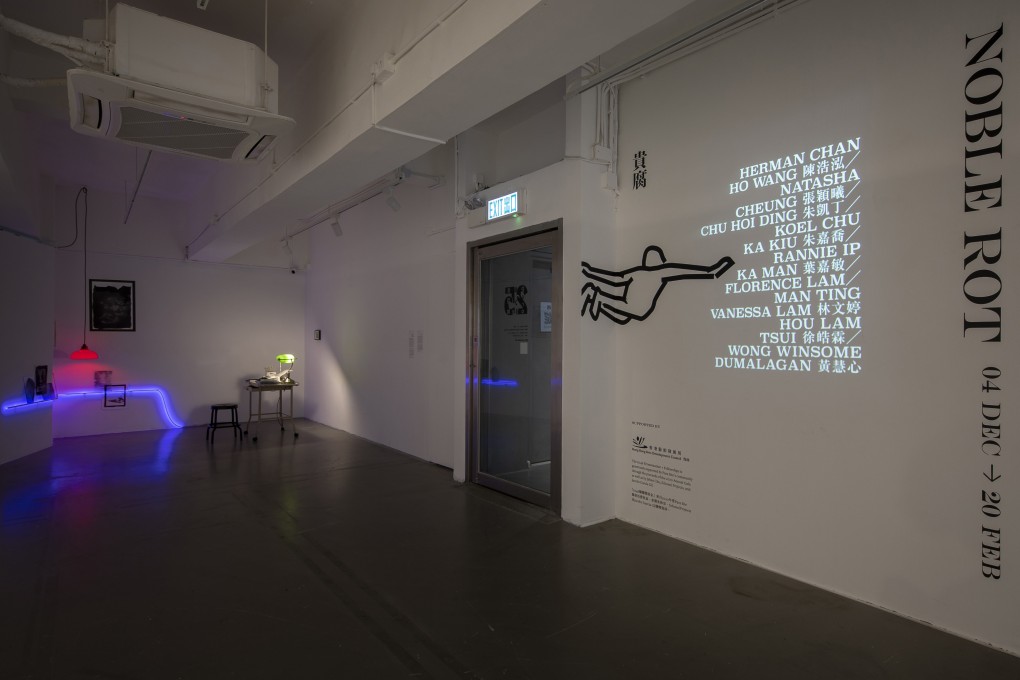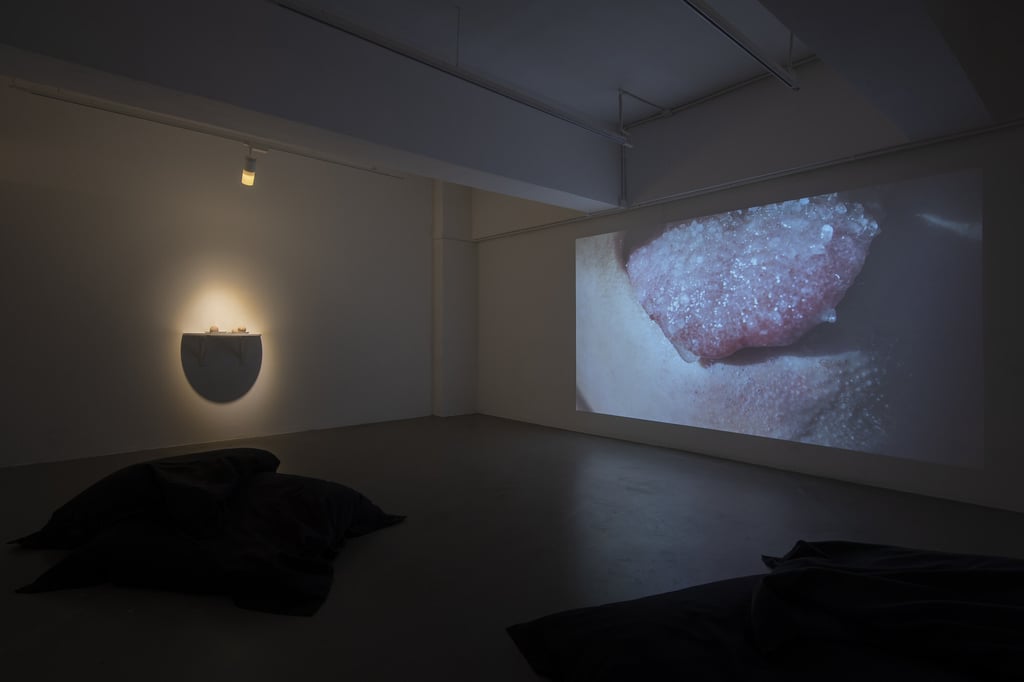Review | ‘Noble Rot’ art show at Para Site in Hong Kong explores themes of decay and transformation
- A diseased tongue as an allegory of colonial mapmakers’ work, a pig carcass that embodies the cruelty of photography – new art at Para Site is metabolic
- The art space is marking its 25th anniversary with an exhibition which takes its name from that given to the Botrytis fungus that, in grapes, makes sweet wine

Botrytis cinerea is the parasitic fungus behind grey mould, a common plant disease that lays waste to vegetable and fruit crops. In viticulture, however, this same fungus can materialise as “noble rot”, a beneficial infestation that, by perforating the skin of grapes and enabling water to evaporate, results in a sweeter wine.
Named after this paradoxical phenomenon, Para Site’s latest two-part exhibition asks 18 emerging artists to explore the tension between decay and transformation – a timely exercise when mainland China’s tightening grip over Hong Kong has many wondering whether the city is moving towards ruin or regeneration. Projects by half the line-up are currently on view at the non-profit art space, with the rest to be unveiled in January.
In keeping with the metabolic theme, several of the projects in “Noble Rot” delve into processes of biological degradation. Hou Lam Tsui’s Hard Tongue on Pillow (2021), for instance, takes the medical condition of geographic tongue as an allegory for the power of naming.

A large-scale projection shows a close-up of salt and sugar being sprinkled on a stuck-out tongue, forming patchy islands that resemble the lesions on the tongues of sufferers from the condition, while superimposed text compares the pattern’s shifting contours to the borders called into being by colonial mapmakers.